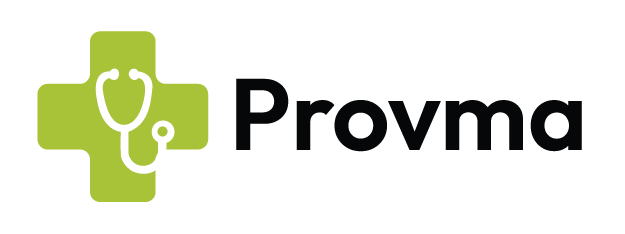The healthcare sector employs a variety of support staff, but medical assistants and clinical assistants often cause confusion because their job titles sound similar. The difference lies in scope, training, and primary responsibilities:
- Medical Assistants handle a blend of administrative (scheduling, billing, patient records) and clinical (vital signs, assisting in exams) work.
- Clinical Assistants concentrate almost entirely on patient-facing tasks, such as preparing rooms, recording vitals, assisting in minor procedures, and ensuring patient comfort.
While both roles are vital to a clinic or hospital’s daily operations, choosing between them depends on whether you want a dual-role position or a purely clinical focus.
If you manage a healthcare practice and want to offload these tasks, Provma’s Virtual Medical Assistants can perform administrative and certain clinical-support functions remotely, reducing costs while maintaining quality patient care.
1. Role & Responsibilities
Medical Assistant (MA)
Primary Focus: Combines patient care with administrative duties.
Typical Tasks:
- Scheduling appointments and managing patient flow.
- Updating electronic health records (EHR).
- Taking patient histories and vitals.
- Assisting physicians during examinations.
- Handling billing, insurance claims, and coding.
Where They Work: Outpatient clinics, private practices, and hospitals.
Clinical Assistant (CA)
Primary Focus: Direct patient care under physician or nurse supervision.
Typical Tasks:
- Preparing exam rooms and sterilizing instruments.
- Taking and recording vital signs.
- Assisting in minor surgical procedures.
- Explaining treatment processes to patients.
- Monitoring patient comfort and safety.
Where They Work: Specialty clinics, dental practices, and hospital departments.
2. Training & Certification
Medical Assistants
- Typically complete a Medical Assistant Program (4–12 months).
- Certifications: CMA (Certified Medical Assistant), RMA (Registered Medical Assistant).
- Training includes administrative systems, clinical procedures, and basic pharmacology.
Clinical Assistants
- May not require formal certification in all states but benefit from healthcare-related diplomas.
- Training focuses heavily on clinical protocols, infection control, and patient interaction.
- Additional certifications can include CPR, First Aid, and role-specific skills.
3. Salary Comparison
Medical Assistant vs Clinical Assistant Salary
- Medical Assistants: $38,000–$42,000 annually (U.S. average).
- Clinical Assistants: $36,000–$40,000 annually.
Clinical Medical Assistant vs Medical Assistant Salary
A Clinical Medical Assistant — who performs both clinical and some administrative duties — can earn between $39,000–$44,000.
Clinical and Administrative Medical Assistant Salary
Professionals skilled in both clinical procedures and administrative workflows often earn $45,000+, especially in high-demand urban areas or specialized facilities.
Earning Potential Factors
- Location: Salaries are higher in metro areas.
- Experience: More years = higher pay.
- Certification: Certified roles command higher wages.
- Work Setting: Specialty clinics and hospitals often pay more than general practices.
4. Career Progression
Medical Assistant Pathways
- Specialized Medical Assisting (pediatrics, cardiology, dermatology).
- Supervisory roles in administrative or clinical departments.
- Transition to nursing programs or healthcare management roles.
Clinical Assistant Pathways
- Specializing in specific medical departments (orthopedics, surgery assistance).
- Transition to Clinical Medical Assistant roles for higher pay.
- Further training to become a licensed practical nurse (LPN) or registered nurse (RN).
5. Job Outlook
The U.S. Bureau of Labor Statistics projects 16% job growth for medical assistants between 2021–2031 — much faster than average. Clinical assistants, while not tracked as a separate category, are included in growth projections for healthcare support roles.
Demand is driven by:
- Expanding healthcare facilities.
- Aging population.
- Rise of telehealth, creating demand for Virtual Medical Receptionists and Virtual Billing Assistants.
6. Remote & Virtual Roles
Today, many healthcare practices outsource administrative and some clinical-support duties to remote professionals.
Provma.com offers:
- Virtual Medical Administrative Assistants for scheduling, billing, and patient communication.
- HIPAA-compliant Virtual Assistants trained for healthcare data security.
- Cost-effective support without compromising care quality.
7. Choosing the Right Career
When deciding between becoming a medical assistant or a clinical assistant, consider:
Training Commitment: Are you ready for certification programs or short-term training?
Preferred Work Style: Do you enjoy multitasking between office and patient care, or do you prefer hands-on clinical work?
Career Goals: Are you looking to advance into nursing or management?
FAQs
Is a clinical assistant the same as a clinic assistant?
In many contexts, “clinic assistant” is simply another term for “clinical assistant,” but some regions may use it for administrative-only roles.
Which pays more — medical assistant or clinical assistant?
Generally, certified medical assistants earn slightly more, especially if they handle both clinical and administrative work.
Can a clinical assistant become a medical assistant?
Yes, by gaining administrative training and certification, a clinical assistant can transition to a medical assistant role.
What certification is needed for a clinical medical assistant?
Most employers prefer certifications like CCMA (Certified Clinical Medical Assistant) or CMA with a clinical focus.
Are there online medical assistant programs?
Yes. Many accredited programs allow students to complete theory online and clinical training in person.
Can these roles be done remotely?
Administrative portions can — through services like Provma’s Virtual Medical Assistant Services. Clinical tasks require in-person work.
For certification details, visit the American Association of Medical Assistants.

